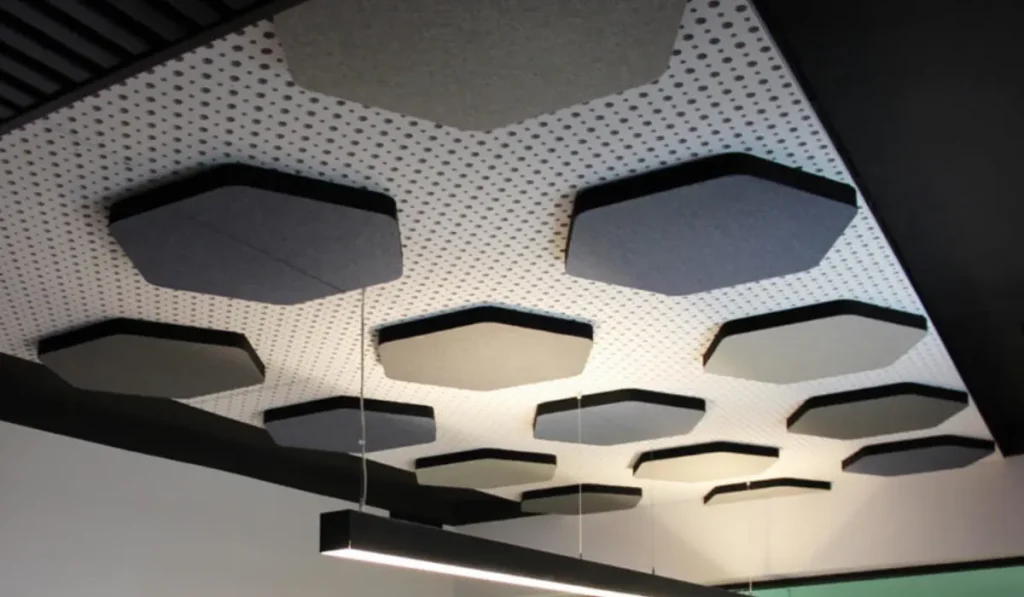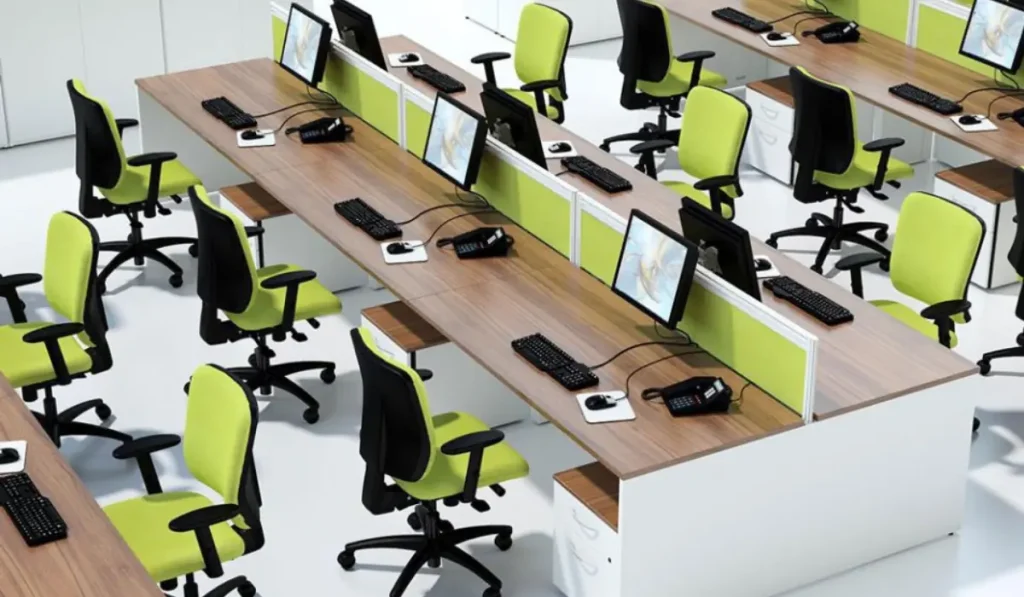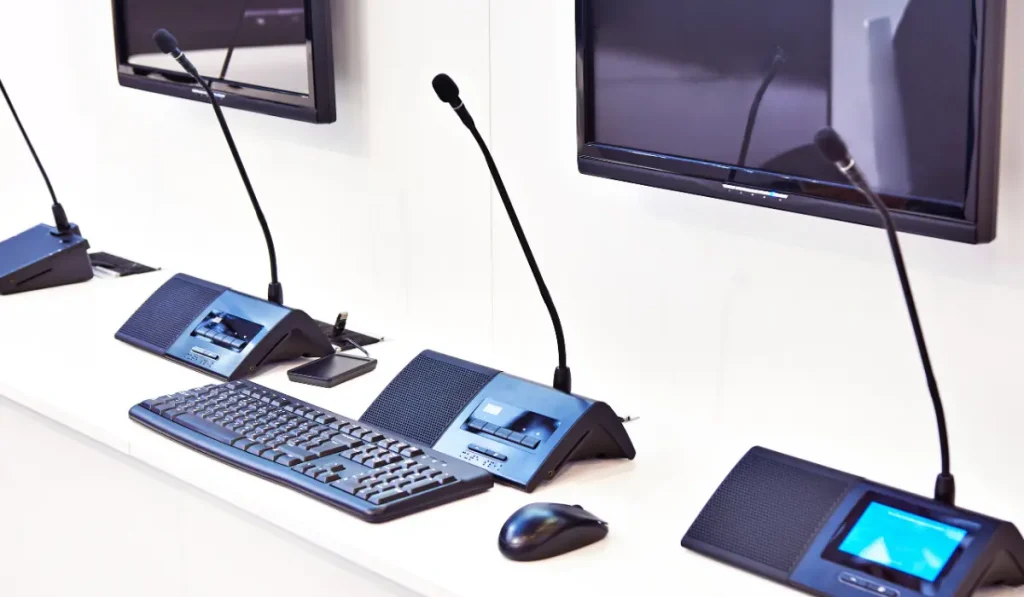In today’s competitive business world, customer satisfaction is everything and your call center plays a critical role in achieving it. However, many call centers struggle with excessive noise, echo, and distractions, all of which reduce call clarity, employee performance, and customer experience. The solution? Call center noise reduction through professional soundproofing.
This blog will explore the most effective soundproofing techniques and acoustic design strategies to create a quieter, more efficient call center. Whether you’re building a new facility or upgrading an existing one, these insights will help you make your workspace more productive and acoustically optimized.
Why Soundproofing Is Critical for Call Centers
When multiple conversations happen simultaneously in a shared space, voices overlap, concentration drops, and communication suffers. Here’s how soundproofing can make a real difference:
- Reduces echo and background noise
- Improves voice clarity on calls
- Lowers stress and fatigue for agents
- Boosts customer satisfaction
- Enhances overall call center productivity
Unlike temporary fixes like white noise or layout tweaks, proper soundproofing offers long-term benefits by physically blocking and absorbing unwanted sounds.
Common Noise Issues in Call Centers
Call centers are particularly prone to noise problems due to their high-density, open layouts and minimal sound insulation. Here are the main sources:
- Loud conversations from nearby desks
- Echo from bare walls, ceilings, and floors
- Office equipment noise (printers, phones, HVAC)
- Lack of acoustic separation between teams
Addressing these issues requires a layered soundproofing strategy focused on containment, absorption, and isolation.
1. Install Acoustic Wall Panels
One of the most effective ways to begin call center noise reduction is to install acoustic wall panels. These are specially designed to absorb mid and high-frequency sounds, like human speech, helping to reduce reverberation and echo.
Benefits:
- Reduces reflected noise and echo
- Prevents sound from bouncing between workstations
- Enhances the aesthetic appeal of the office
Choose panels made from high-density foam, fabric-wrapped fiberglass, or polyester fiberboards for maximum performance.
2. Soundproof the Ceiling
In open-plan offices, the ceiling is a major culprit in spreading noise. Soundproof ceiling tiles or acoustic baffles can dramatically cut down sound reflection and voice bleed between departments.
Recommended Solutions:
- Acoustic drop ceiling tiles with NRC (Noise Reduction Coefficient) of 0.70 or higher
- Hanging baffles or clouds for high ceilings
- Plenum barriers above ceilings to block overhead sound transmission
These installations are especially important in call centers with high ceilings or shared HVAC systems.
3. Use Carpet Tiles or Acoustic Flooring
Bare floors reflect sound and contribute to a noisy environment. Installing acoustic flooring, like carpet tiles with sound-absorbing underlay, can reduce impact noise and dampen overall sound levels.
Flooring Options:
- Commercial-grade carpet tiles
- Sound-absorbing vinyl flooring
- Foam or rubber underlayment
Flooring is often overlooked in soundproofing, but it’s essential for a complete acoustic strategy.
4. Create Acoustic Cubicles and Desk Partitions
Open desks contribute significantly to noise problems. Replacing them with acoustic cubicles or adding sound-absorbing desk dividers can significantly reduce voice transmission between agents.
Features to Look For:
- High-backed cubicle walls with sound-absorbing cores
- Fabric-wrapped or felt partitions
- Desk-mounted acoustic panels between agents
Not only do these improve noise control, but they also give employees a greater sense of privacy and focus.
5. Seal Gaps in Doors, Windows, and Walls
Even the best soundproofing materials are ineffective if sound can leak through structural gaps. For effective call center soundproofing, all weak points must be sealed.
Soundproofing Tips:
- Install acoustic door sweeps and weather seals
- Use double-glazed acoustic windows
- Seal wall penetrations (like cable or AC ducting gaps) with acoustic caulk or putty pads
A professional acoustic audit can help identify these leaks and recommend solutions.

6. Add Acoustic Partitions to Open Layouts
If you’re working with a large, open-plan space, mobile acoustic partitions are a cost-effective and flexible way to break up sound paths without major remodeling.
Benefits:
- Portable and reconfigurable
- Great for temporary zones or call center expansions
- Can be customized with branding and design
Use them to separate teams or create focused work areas within a noisy environment.
7. Consider Mass-Loaded Vinyl (MLV) for Walls
If you want serious sound-blocking capabilities, Mass-Loaded Vinyl (MLV) is one of the best materials for adding density to walls and ceilings.
Where to Use MLV:
- Behind drywall in partition walls
- On ceilings to block upstairs noise
- Under carpeting for additional soundproofing
MLV blocks sound transmission rather than absorbing it, making it ideal for high-noise zones like call centers.
8. Optimize the HVAC System for Noise Control
HVAC noise often goes unnoticed but contributes significantly to acoustic fatigue. A soundproofed office should also address mechanical noise from vents, ducts, and fans.
Solutions:
- Use lined ductwork with acoustic insulation
- Install duct silencers or vibration isolators
- Keep HVAC units outside main work areas if possible
This reduces low-frequency rumble and background noise that interferes with calls.
9. Combine Soundproofing with Acoustic Treatment
For maximum call center noise reduction, combine soundproofing (blocking sound) with acoustic treatment (absorbing sound). This dual approach ensures both privacy and clarity.
| Soundproofing Materials | Acoustic Treatment Materials |
| Mass-Loaded Vinyl (MLV) | Fabric-wrapped wall panels |
| Acoustic doors/windows | Ceiling clouds and baffles |
| Dense drywall or double walls | Carpet and sound-absorbing furniture |
A professional solution will always include both types of materials, tailored to your space and budget.
10. Work With a Professional Acoustic Consultant
While DIY soundproofing can work for small fixes, larger projects require expertise. An acoustic consultant will assess your space, identify noise sources, and recommend tailored solutions that offer maximum impact.
Benefits of Hiring Experts:
- Accurate noise mapping and analysis
- Custom-designed acoustic solutions
- Professional installation of high-performance materials
- Compliance with international standards

Soundproofing Solutions Tailored to Pakistan and UAE Markets
If you’re located in Pakistan or the UAE, it’s crucial to choose soundproofing materials that suit regional architecture and climate conditions. At SoundKrafted, we specialize in designing and installing call center soundproofing solutions that address the unique challenges of offices in:
- Lahore, Karachi, Islamabad, Rawalpindi
- Dubai, Abu Dhabi, Sharjah, and beyond
We understand the construction standards and soundproofing needs of offices in these regions and offer localized solutions that deliver results.
Conclusion: Silence is a Competitive Advantage
A noisy call center doesn’t just irritate your staff, it directly impacts your customer service, efficiency, and bottom line. By implementing soundproofing solutions tailored for modern call centers, you can reduce noise pollution, improve communication clarity, and foster a stress-free work environment.
Soundproofing is not an expense, it’s an investment in your team’s productivity and your customers’ satisfaction.
Ready to Soundproof Your Call Center?
At SoundKrafted, we offer end-to-end call center soundproofing services in Pakistan and the UAE, from acoustic audits and custom design to professional installation.
Contact us today for a free consultation and let’s build a quieter, more productive workspace together.

